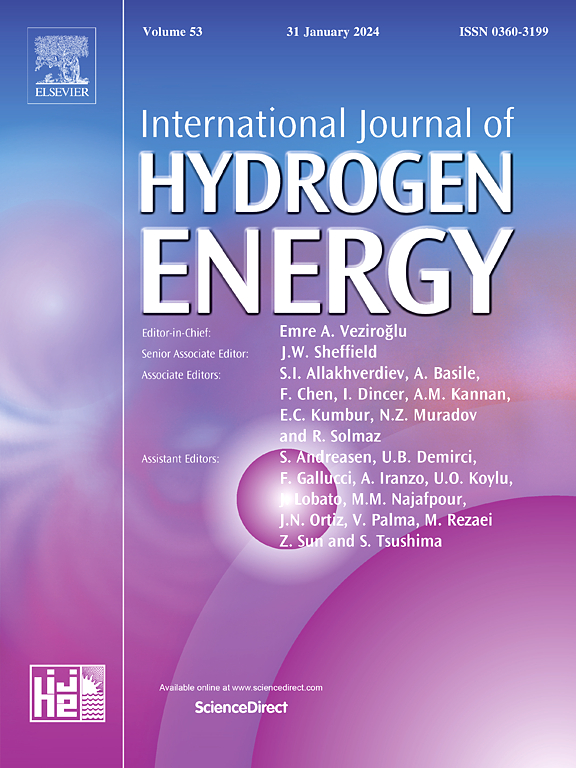用Ni/MCM-41催化剂生产合成气干重整反应条件的评价
IF 8.1
2区 工程技术
Q1 CHEMISTRY, PHYSICAL
引用次数: 0
摘要
沼气干式重整为合成气生产提供了一条可持续发展的途径。本研究评估了Si-MCM-41负载镍催化剂用于干重整,重点是优化反应参数,如催化剂尺寸和质量,压力和空速。并对催化剂的稳定性和抗H2S中毒能力进行了评价。采用TGA、XRD、N2物理吸附、SEM、TEM、FTIR、TPR等手段对Ni/MCM-41催化剂的反应前后进行了表征。在常压下,空速为7.20 L h−1 gcat−1,催化剂用量为3 g (500-710 μm)时,CH4和CO2的转化率分别达到99.14%和97.48%,H2和CO的选择性接近49%。催化剂在50小时内保持稳定,并能耐受高达10ppm的H2S浓度。该研究证明了Ni/MCM-41作为一种稳定且耐硫的干重整催化剂的潜力,突出了其对高效沼气升级的适用性。本文章由计算机程序翻译,如有差异,请以英文原文为准。
Evaluation of reaction conditions in the dry reforming process using a Ni/MCM-41 catalyst for syngas production
The dry reforming of biogas offers a sustainable route for syngas production. This study evaluates a nickel catalyst supported on Si-MCM-41 for dry reforming, with a focus on optimizing reaction parameters such as, catalyst size and mass, pressure, and space velocity. Catalyst stability and resistance to H2S poisoning were also assessed. The catalyst Ni/MCM-41 was characterized before and after reaction using TGA, XRD, N2 physisorption, SEM, TEM, FTIR, and TPR. The best performance was achieved with 3 g of catalyst (500–710 μm), under atmospheric pressure and a space velocity of 7.20 L h−1 gcat−1, reaching CH4 and CO2 conversions of 99.14 % and 97.48 %, and H2 and CO selectivity near 49 %. The catalyst remained stable for 50 h and tolerated H2S concentrations up to 10 ppm. This study demonstrates the potential of Ni/MCM-41 as a stable and sulfur-tolerant catalyst for dry reforming, highlighting its suitability for efficient biogas upgrading.
求助全文
通过发布文献求助,成功后即可免费获取论文全文。
去求助
来源期刊

International Journal of Hydrogen Energy
工程技术-环境科学
CiteScore
13.50
自引率
25.00%
发文量
3502
审稿时长
60 days
期刊介绍:
The objective of the International Journal of Hydrogen Energy is to facilitate the exchange of new ideas, technological advancements, and research findings in the field of Hydrogen Energy among scientists and engineers worldwide. This journal showcases original research, both analytical and experimental, covering various aspects of Hydrogen Energy. These include production, storage, transmission, utilization, enabling technologies, environmental impact, economic considerations, and global perspectives on hydrogen and its carriers such as NH3, CH4, alcohols, etc.
The utilization aspect encompasses various methods such as thermochemical (combustion), photochemical, electrochemical (fuel cells), and nuclear conversion of hydrogen, hydrogen isotopes, and hydrogen carriers into thermal, mechanical, and electrical energies. The applications of these energies can be found in transportation (including aerospace), industrial, commercial, and residential sectors.
 求助内容:
求助内容: 应助结果提醒方式:
应助结果提醒方式:


